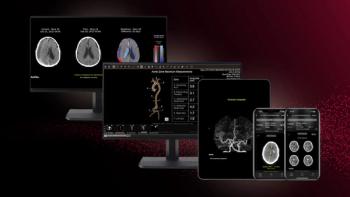
Base Ten to sell majority stake in unit developing PACS software
Company to offer multimodality software to OEMsFormer defense firm Base Ten has decided to sell a majority stake in its PACS software development unit, a move designed to focus the company on its core business: order execution systems and services
Company to offer multimodality software to OEMs
Former defense firm Base Ten has decided to sell a majority stake in its PACS software development unit, a move designed to focus the company on its core business: order execution systems and services for the pharmaceutical, chemical, and medical products industries. The company has retained investment bank Wm. Sword & Company to raise the equity capital for the unit, called Health Imaging Development Company.
Base Ten of Trenton, NJ, will retain a financial interest in HIDC, which has developed a multimodality PACS software package called Imaging Diagnostics and Archiving Version 2.0. In addition, Base Ten management will play key roles in the unit. Michael Elser will serve as president of HIDC, while Base Ten chairman and CEO Thomas Gardner will become chairman. Gardner will also retain his roles with Base Ten.
The firms previous PACS product was uPACS (SCAN 5/14/97), an ultrasound miniPACS that was employed primarily in Europe as part of the European Random Trial for Ovarian Cancer Screening (ERTOCS) program. The product only reached the beta testing phase in the U.S., however.
IDA 2.0 represents a considerable upgrade to uPACS, Elser said. Developed in-house by Base Ten, the IDA offering features a high level of integration of medical images and other clinical information, he said.
The Windows NT-based IDA server provides file, database, and archive management. It utilizes the Microsoft BackOffice server products, which confer important scalability advantages, Elser said.
A facility could begin with an ultrasound miniPACS, and as they become more comfortable with digital imaging, they can scale their IDA system to support digital modalities, increase the depth of the archive, and add remote sites without having to install a completely new system, Elser said.
On the workstation side, the Windows 95 or NT-based IDA workstation can support resolutions up to 1600 x 1200. A 2K display is in development.
With the IDA workstation software, users can configure forms for information management that can integrate directly into the application, Elser said. This enables physicians to track patient information for research or outcomes management. In addition, data entry reports can be configured to meet the specific needs of the hospital department in which it is deployed. IDA also includes a video digitizer unit.
Base Ten plans an OEM distribution model for IDA, although no agreements have been signed yet. The company expects to receive Food and Drug Administration 510(k) clearance for IDA in the first quarter of 1999. No determination about product distribution outside the U.S. has been made, Elser said.
Newsletter
Stay at the forefront of radiology with the Diagnostic Imaging newsletter, delivering the latest news, clinical insights, and imaging advancements for today’s radiologists.




























